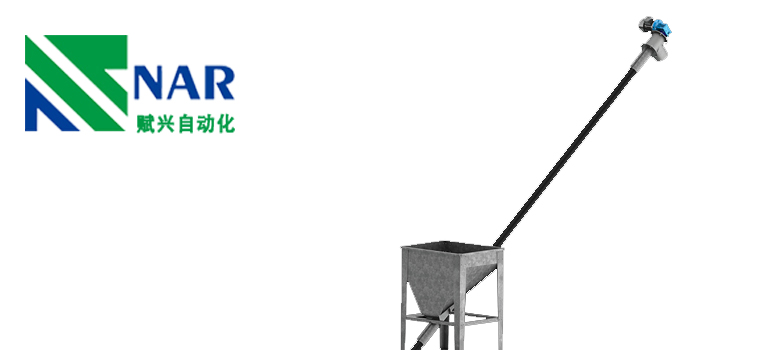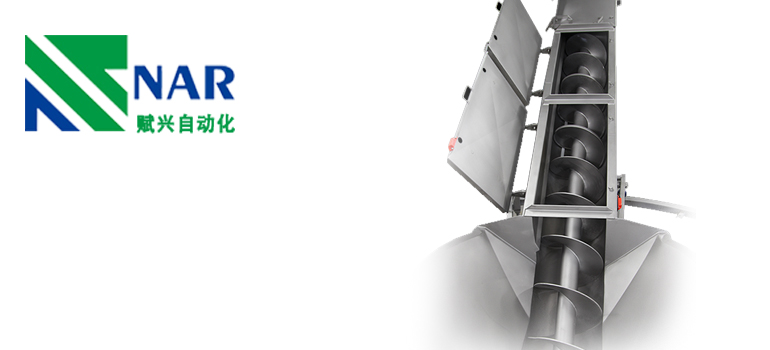Summary:
Understanding The Design Of Screw Conveyors
What Is A Screw Conveyor?
The Types Of Screw Conveyors
The Capacity Of Screw Conveyors
Peralatan screw conveyor design has changed over the years, but its core features have always stayed the same, along with its purpose. What’s more, screw conveyor systems are incredibly sophisticated, making the conveyor even more powerful.
So how are they designed today? Keep reading as we cover everything you need to know about screw conveyors, including their innovative designs.
What Is A Screw Conveyor?

A screw conveyor (also called an auger conveyor) is a piece of industrial equipment that is commonly used to transport a wide variety of items from one location to another. These items typically include:
- Granular solids
- Semi-solids
- Liquids
- Non-flowing materials
The screw conveyor design makes employees’ lives easier, as it removes the need for manual loading. Therefore, the equipment has many uses in a variety of different industries where moving high amounts of materials is necessary.
When looking at the main features of the screw conveyor design, it consists of a rotating screw shaft that has been carefully fitted in a trough. As the materials are fed through one end, the screw rotates. When this happens, the materials travel through the trough until they reach the other side.
Different designs of the screw conveyor allow for items to be moved in vertical, horizontal, and inclined directions, making the equipment helpful in different situations.
The Types Of Screw Conveyors
There are various types of screw conveyor designs and screw conveyor systems. The type needed when purchasing one ultimately depends on what it is being used for. Let’s take a look at the main ones:
Standard Pitch
To start with, we have the standard pitch screw conveyor. The pitch has been carefully designed to be the same length as the screw diameter (the distance between the two flight crests).
The standard design makes the conveyor useful for transporting many materials, and it is usually used in a horizontal or inclined position (below a 10’ angle).
Cut Flight
Opposite to the majority of the other screw conveyors, the flights are not rounded. Instead, there is a notch on each one. The purpose of this is to help mix materials as they pass along the conveyor.
Therefore, any materials that often pack, such as dried milk, talc, or hydrated lime, would be best suited for this type of design.
Variable Pitch
Moving on to the variable pitch, this type of conveyor has a pitch that’s longer on the inlet side. The reason for this is to allow the materials flowing through it more space, which makes them ideal for feeding items from bins, silos, and hoppers.
This screw conveyor design is also great at controlling the flow rate of materials being passed through it, helping to improve consistency. Furthermore, the screw conveyor systems also ensure this is achieved.
Short Pitch
As the name suggests, the pitch is shorter than the screw diameter. As a result, you can transport materials vertically and at steep inclines with ease.
Furthermore, this type is regularly used when transferring free-flowing materials (grains, flour, sugar, etc.), making them common in the agriculture industry.
Sectional Flight
In this one, the flights are made from flat steel discs with uniform on the inside and outside of the diameters. Using a plasma, laser cutter, or water jet, the discs are cut and pressed to create a helix (a shape like a corkscrew or spiral staircase) or a lone flight, allowing them to be fitted to the conveyor.
The screw conveyor design is quite thick, making it useful for processing abrasive items. For example, if you want to transport alumina or glass cullet, this is the ideal tool to get the job done.
Half Pitch
Similar to the short pitch, half-pitch conveyors have a shorter pitch than the screw diameter. However, the difference is that this has ⅔ the pitch of the screw diameter, whereas the half pitch, as you can probably guess, has ½.
Most people use this version to transport materials vertically or at an incline.
Long Pitch
On the other end of the spectrum, long-pitch conveyors have 1 ½ times the screw diameter. Their purpose is to quickly transport liquid and free-flowing materials. Furthermore, screw conveyor systems and their design can ensure fluids keep moving in a circular motion, which can be important for certain free-flowing materials.
Double Flight
Unlike the others we’ve mentioned, these are two sets of flights running helically around the conveyor screw on a double-flight design. By doing so, the process of moving materials is greatly sped up.
A uniform flow rate of materials passing through can be achieved with this design. Also, materials move smoothly through the conveyor.
Tapered Flight
In the tapered flight design, the pitch is exactly the same throughout; however, the flight width increases at a consistent rate from one end to the other. This type of conveyor is actually a second option if you want something cheaper than the variable pitch conveyor.
In addition to its favorable price tag, this version is ideal for transporting lumpy solids without issues.
The Capacity Of Screw Conveyors
When we look at the capacity of screw conveyors, the material weight or volume per hour is the go-to measurement.
As we’ve mentioned, there are many different designs; therefore, these differences affect how much you can transport. For example, the trough loading percentage, screw diameter, the max RPM (revolutions per minute), the screw conveyor systems, and the maximum lump size all play a part in determining the conveyor’s hourly capacity.
With that being said, say you had a screw conveyor with 15% loading, a screw diameter of 4, ½ lump size, and a maximum RPM of 69. Then the capacity would be 14.5 cubic feet per hour (with it running at max speed).
As you can see, this important piece of equipment comes in many variations and has various screw conveyor systems in order to function. It can efficiently move materials that would otherwise require many hours of manual loading. Therefore, it’s no surprise that many people use screw conveyors in a wide range of industries.
Maybe you are interested in the following: 3 Types of chain conveyor

